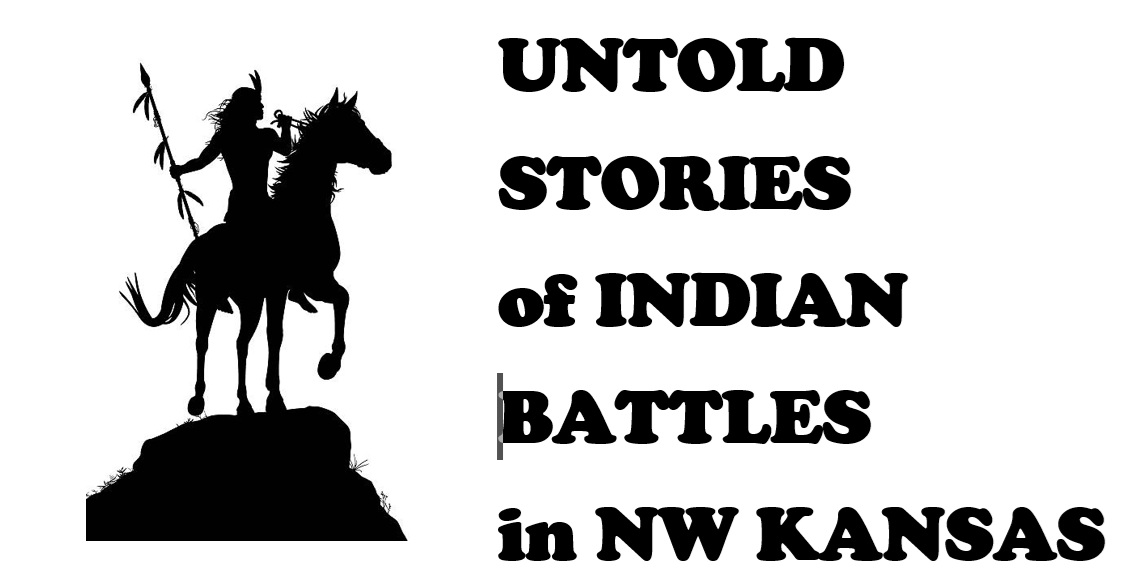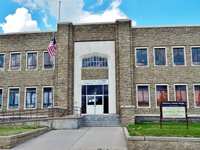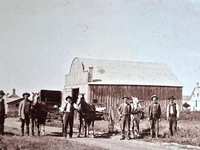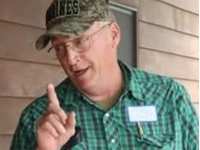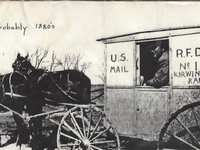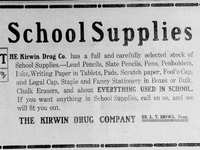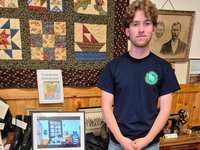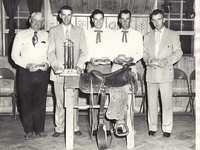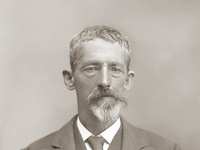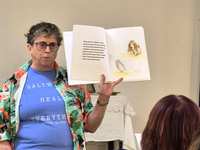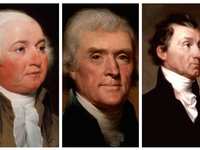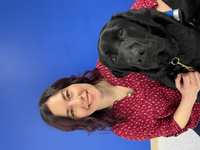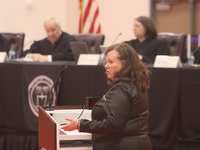- Sections :
- More
The Bissell Buzz (10-8-25)
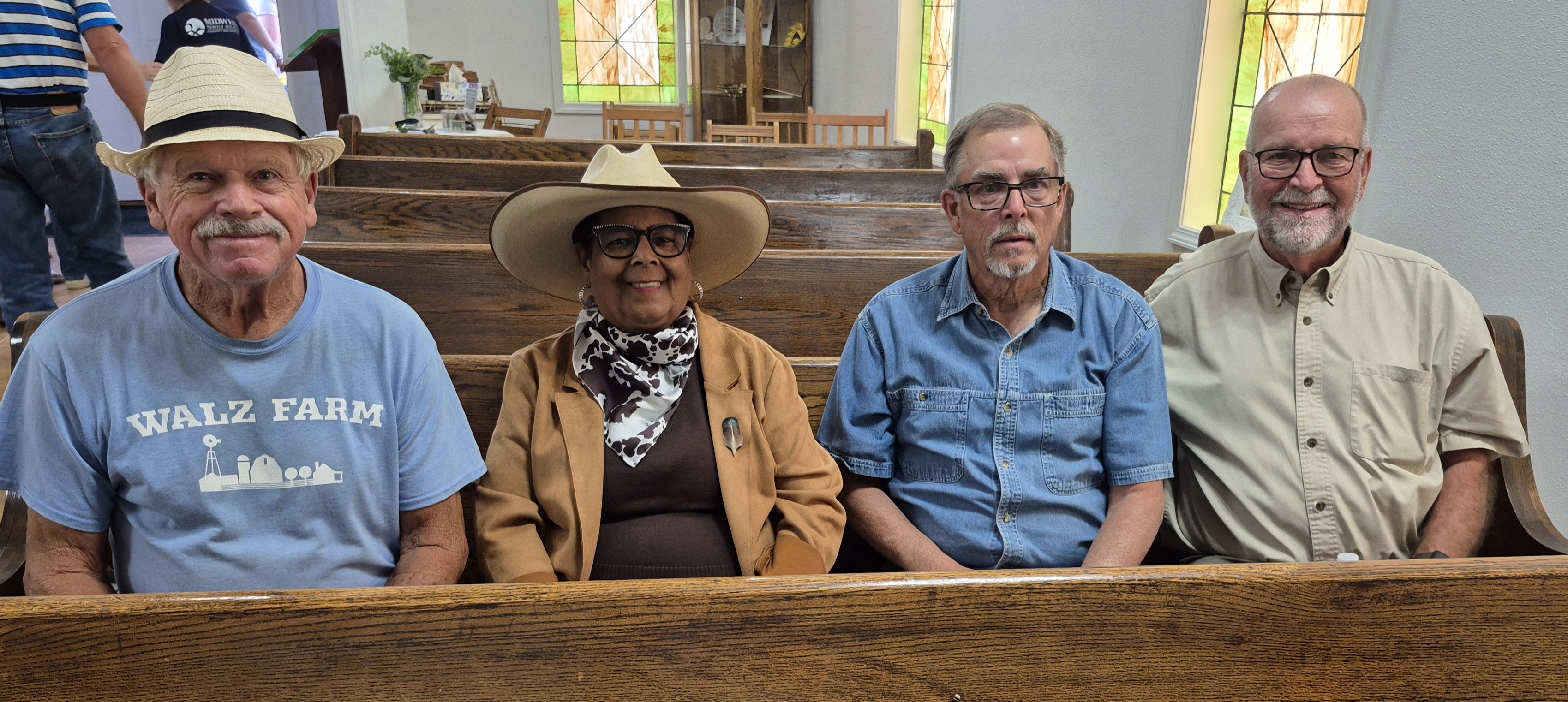
Bissell Buzz
An attendee of our recent Night of the Museum questioned a display of sad irons in the sod house. We did not have a chance to fully answer her question amidst all the people at the event and hope she can read this. Why is it called a sad iron? My first thought originally was probably because ironing of laundry is a tedious process that could make you sad. In actual fact it is nothing of the sort.
Sad irons, also called sadirons or flat irons, were the heavy, solid irons, usually made from cast iron, that people used before modern electric steam irons. Weighing between five and nine pounds and solid and durable, there are a lot of them still around, used today mostly as knickknacks and doorstops. The idea of ironing clothes and other fabric to remove wrinkles was invented in China, where the earliest ironing was done with cast iron cooking pots filled with hot water and heated in the hearth or fireplace. Europeans were late to take up ironing, and sad irons did not appear there until the 17th century. "Sad" was an 18th-century English word that meant "solid." These irons were heated in front of a fire or on the stove and you really needed more than one – while using one, the next one or more was being heated or kept hot.
Sad irons however had the problem that the whole iron, including the handle heated up and led to many a hand being burned. Also, radiant heat would make their faces red and hot whilst ironing. In 1876 Mary Florence Potts of Iowa invented a hollow cast iron sad iron with a detachable wooden handle. She filled the hollow with Plaster of Paris or clay, which acted as insulation to keep the heat at the bottom of the iron. This design also made the iron lighter. Demonstrated at the Centennial Exposition in Philadelphia in 1876, Potts' sad irons became quickly and enormously popular, the best-selling sad irons in the world at that time.
The attendance of our Ellis Trail to Nicodemus screening of the documentary truly exceeded our expectations. Both films were made by direct descendants of Emma and Charles Williams. The first film is the love story of Robert and Billie Brogden made by 6th generation Robert Brogden III (Bert), of his grandparents. The second film is of the journey of a pregnant Emma Williams, who became the matriarch of the very first black settlers coming to Nicodemus – which was written, directed and narrated by 4th generation Angela Bates. Most roles were played by direct descendants of those first settlers of Nicodemus, which is the oldest remaining all black town west of the Mississippi. Angela Bates, together with Leroy Walz, Darris Worcester and Phil Martin were also in attendance and added some background to the movie and its making and also answered questions from the audience after the screening. The ruts of the wagons from those Ellis trails can still be seen today on the Walz farm, where most of the movie was filmed. 20 lucky ladies went home with a yellow silk rose, as remembrance of the importance of a yellow rose given to Emma Williams by her husband on her departure from Kentucky.
Our next event will be the Untold Stories of Indian Battles in NW Kansas, to held on October 18th at the Huck Boyd Center at 9am. Our main speaker is Dr. Jeff Broome from Colorado, who will also have his books available to be purchased at the event. Other speakers are Brennan Engle, Denis Vine and Gordon Solomon. Artifacts that were found by metal detecting at various sites, will be on display together with a Spencer Repeating Rifle and other period firearms. A bonus will be Chris Daring, Jeff’s wife, who will be playing on her 1802 fiddle while guest settle in. Refreshments will be served. There is a $10 entrance fee (Members of the Historical Society pay half price). For catering purposes as well as seating arrangements we request RSVP’s by email (ftbissell@live.com) or text name and number to 785-533-1005.
Ruby Wiehman – Curator
